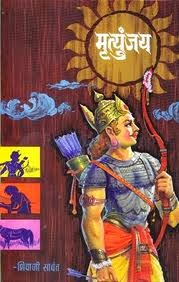Myth vs Science: The Curse of Talakkad
 |
| The Arakeswara Temple, Talakkad |
A pleasant breeze welcomes you along with a
prolonged silence, an unnerving silence that one can hear the click and clack
sounds of one’s footsteps. The little temple town of Talakkad, situated on the
left banks of the river Kaveri, located nearly 60 kms from Mysore, is famed for
its constantly in motion sand dunes. In desolate towns like Talakkad, the
mysteries unravel as one goes around exploring the place. Yet, it seems like
there is an imposition on how much one should know. The temple town is mostly
known for a legendary curse which turned the thriving town into a sandy shore
line. Hence, it is a treat for anyone who has a passion for history, heritage
or architecture.
History and rationality clash with mythology here in
the town which is also known as Dalavanapura and Gajaranya. Local myths speak
of Lord Shiva residing on a tree that was later worshipped by locals and
saints. The tree is said to have then reincarnated as an elephant, giving the
town its name: Gajaranya (The Elephant Forest). These elephants are believed to
be one of the reasons behind the origin of the Shiva temples.
The temple town has five Shiva temples that have been
recently recovered from sand. Each of the five temples: the Vaidyeswara Temple,
Maraleswara Temple, Arakeswara Temple, Pathaleswara Temple and the Kirtinarayana
Temple are said to represent five different avatars of Lord Shiva. In honour of
these temples, a panchalinga darshanam is held every 12 years, the last one was
held in 2013. The Panchalinga Darshanam is held on a new moon day in the month
of Karthik (October-November) when the stars of Khuha Yoga and Vishakha
conjoin. A walk around Talakkad follows a circular path, stretching for a
kilometre, which begins from the Vaidyeswara Temple covering the Arakeswara,
Pataleswara, Maraleswara and the Kirtinarayana Temples. The path is designed such
that you return to the Vaidyeswara Temple after the walk.
 |
| The River Kaveri in Talakkad |
The curse of Talakkad refers to the time when Mysore
was still a part of the erstwhile Vijayanagara Empire. The outpost of the
Viceroy was located at Srirangapatnam in Mandya district. In 1610, Raja
Wodeyar-I conquered the fort of Srirangapatnam from the ailing Viceroy Tirumala-II
using force. By then, an ailing Tirumala had retired to Talakkad. Confiscating
everything that belonged to Tirumala was a priority for Raja Wodeyar. Tirumala’s
wife, Alamelamma, had brought the jewellery that belonged to her. She would
then lend them to adorn Goddess Ranganayaki Ammal at the Sri Ranganathaswamy
Temple in Srirangapatnam every Tuesday and Thursday.
Raja Wodeyar believed that
with this loss of power, the family had relinquished their authority over these
jewels and firmly believed that they belonged to the temple. Raja Wodeyar sent
his soldiers behind Alamelamma to recover the jewels. Before jumping into a
whirlpool in the river Kaveri, she uttered a legendary curse. The curse, as
passed down in Talakkad and local folklore is: ‘Talakkadu maragali, Malangi
maduvagali, Mysuru doregalige makkallilade hogali’ (May Talakkad turn into a
barren expanse of sand, may Malangi turn into an unfathomed whirlpool, may the
Mysore Maharajas not have children for eternity). Since then, the Wodeyars have
had biological heirs only in alternate generations.
Despite its numerous myths and legends which pervade
the town, it is the brilliance of the architecture that stands out. The temples,
which have been dug out from sand, transport one into a different era. The
brilliance of the temples defy age. If it is spoken of a place with religious stupor,
there is no doubt that there is difficulty in verifying the true story behind
the legend of Talakkad. While the tale of Alamelamma remains a disturbing
chapter in the history of Talakkad and Mysore, it is a story with no precise
answers or scientific justifications. By the sheer virtue of constant
repetition, Talakkad continues to be a living legend.
 |
| A Nandi that was recently recovered from sand |


Comments
It is said, that poeple forget what you say and do to them, but they never forget how you made them feel. I think that this holds true even for places.
I wanna ask, how did Talakkad made you feel? How did it feel to stand and visit a cursed place?